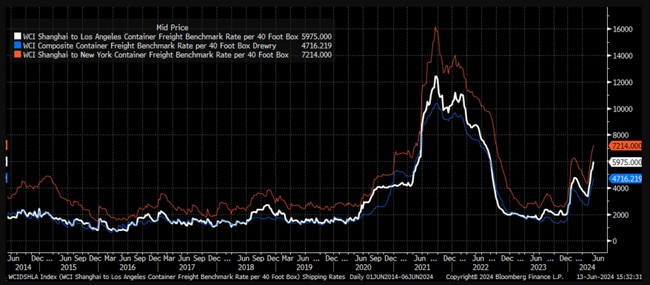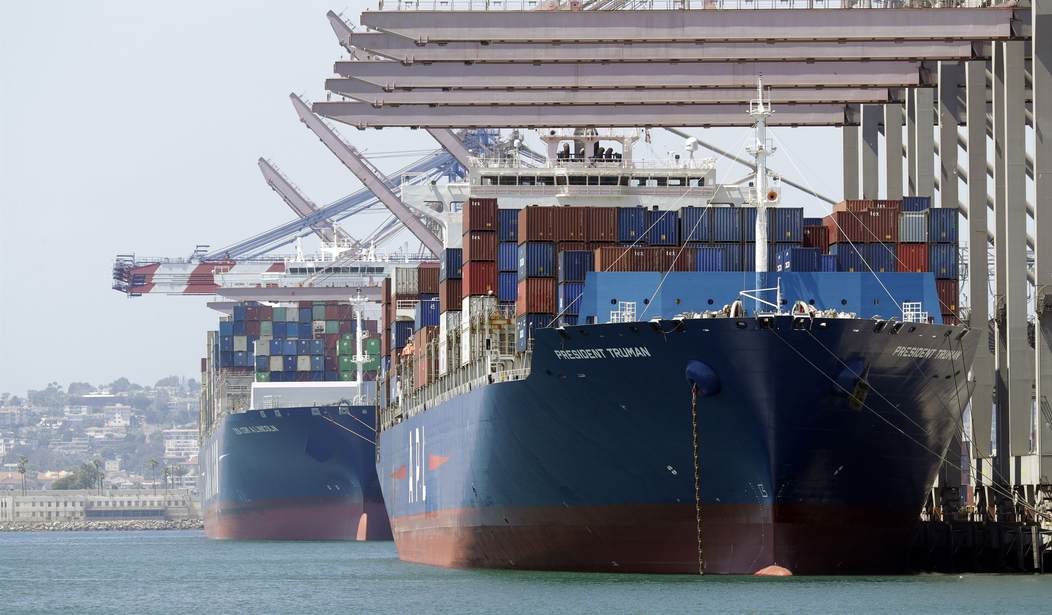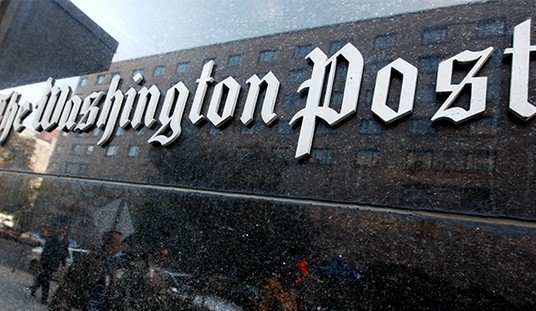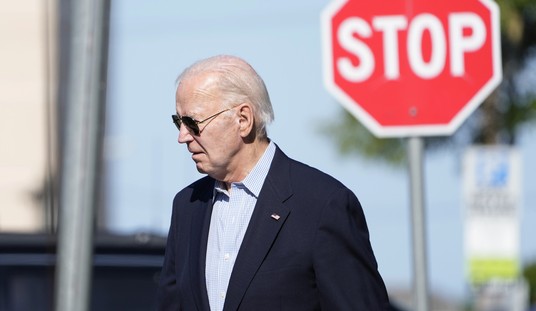Just when things seemed to be simmering down a little bit - not great, you understand, but the waters weren't roiled and there were dribs and drabs of good news -
What a week! Our 700ft wide, 50ft deep channel was opened & we welcomed our largest container ship to Seagirt Terminal since the bridge collapse! Ever Forever has a capacity of nearly 13K 20ft long containers. Big ships are back in Baltimore. #BaltimoreIsBack #ThePortForOurNation pic.twitter.com/005d9JZ5Zs
— Port of Baltimore (@portofbalt) June 13, 2024
- along comes a big, black cloud and the wind has started picking up.
YOICKS, you think.
What now?
Well, it turns out that what shipping companies have lost in volume due to the global economic slowdown, they're going to make up for in fees.
Oh, boy, are they ever, and it looks like there's no time like the present to start jacking those rates.
Fears are rising ocean freight rates may surpass $20,000 with no relief for global trade into 2025
Just as the Federal Reserve and U.S. economy get good news on inflation, with consumer prices and wholesale prices softening, a major global trade inflation indicator is headed in the wrong direction. Rising freight rates are a new source of concern in the global supply chain with forecasts warning that ocean cargo prices could reach $20,000 — potentially even touch the Covid era peak of $30,000 — and stay there into 2025.
Spot ocean freight rates from the Far East to the U.S. popped between 36%-41% month over month, and ocean carriers increased additional charges known as general rate increases by roughly 140%, according to the CNBC Supply Chain Heat Map. These costs have taken the price of a 40-foot cargo container to about $12,000.
The trucking industry is reflecting the decline in volume of freight shipping. Little has been said about the pretty substantial job losses in that sector - darn near 30,000 jobs gone in just the past year.
Trucking companies are shedding jobs as a downturn in freight demand persists.
The trucking industry lost a seasonally-adjusted 5,400 jobs in May from a month earlier, according to preliminary figures released by the Bureau of Labor Statistics on Friday. The pullback was the largest single monthly decline in the sector since August 2023 and left trucking payrolls down 29,600 jobs over the past year.
...Truckers are working through one of the most prolonged downturns in the U.S. domestic freight market in recent memory, as an oversupply of drivers, lured into the industry during the Covid-driven boom in freight demand, competes for cargo and pushes down prices.
What that means is less orders for goods from China, less need for containers, so those are hard to come by when there are orders, and extended (or "dwell" time) in ports for containers and cargo vessels until they have a vessel loaded.
Freight rates are starting to tap that COVID territory again.

Exacerbating the situation is, of course, the unresolved rampaging of the Houthis in the Red Sea, requiring all but the boldest shippers - or ones who've struck deals with the Islamic pirates - to take the long way home. That trip around the Cape of Good Hope adds time, extra money for crews, and big bucks for fuel, which all get dumped onto the bill for your container of tchotchkes from wherever. Makes them not such a bargain anymore, too.
...According to the Defense Intelligence Agency’s report on the economic impact of the Houthis’ Red Sea attacks, container shipping through Red Sea had declined by approximately 90% between December 2023 and mid-February. Alternate shipping routes around Africa not only add about 11,000 nautical miles (one to two weeks of transit time), but also add an approximate $1 million in fuel costs for each voyage.
Folks who have to put their goods on ships are fit to be tied, but helpless at the moment.
...Peter Boockvar, chief investment officer at Bleakley Financial Group, said the global economy is in a new world of inflation volatility, even as the Fed’s latest comments and Consumer Price Index data in the U.S. showed progress on disinflation. “The spike in ocean shipping rates, along with air is a reminder of this,” Boockvar said. “We’ve seen in the past goods prices can easily be reversed upward. Higher for longer rates are real.”
Shippers are frustrated by the sharp turn in supply chain pricing. Nate Herman, senior vice president of policy at the American Apparel and Footwear Association, wrote in an email that in May the market saw low demand, with container bookings down 48% and ample supply with vessel capacity up 2.6%, “but yet carrier general rates exploded with up to a 140 percent increase! Shippers are paying sky-high rates as a direct result of schemes that ignore existing contracts.”
As brother Bingley explained during the pandemic, you might well have a contract in hand for $X per container. But if demand overtakes space, then your container at the contract price will sit on the dock while those willing to pay a premium to move their goods supersede you.
So you pay the premium, too, or else.
The inflationary rates happening now, though, are the result of the direct opposite reason from those of the pandemic and fueled by the Houthi Shooties.
...The CNBC Supply Chain Heat Map highlights the disconnect between ocean freight prices and demand, which is unlike during the pandemic when ocean freight was fueled by insatiable consumer buying and a lack of containers and vessels to move the trade.
According to ocean freight data from FreightWaves SONAR, container bookings and freight orders from shippers to the ocean carriers are down 48% month-over-month. Ocean carriers are canceling vessel sailings and around 37% of ocean bookings, which creates a tighter market for containers to be placed on vessels, increasing the price of the container. Adding to the constriction of container availability are the longer Red Sea transits. The route around the Cape of Good Hope ties up container availability and artificially shrinks the pool of available containers.
Someone has to pay for that, and it all gets dumped in the consumer's lap eventually in the form of late or unavailable goods, and more expensive ones when they buy them. A consumer in an election year who is already feeling pretty badly used as it is.
The Panama Canal returning to full capacity may alleviate some of this, but nowhere near enough relief. There is also the very real possibility of significant labor troubles in the offing, with strike threats and hard feelings between dockworkers, management, and major shipping companies on both coasts boiling up.
That would be all the country needs - more choppy water ahead, with our daffy, demented captain and his crew of misfits at the helm.
If you hear "Beege, overboard!" don't throw a life preserver.
I'll try to swim out.
Honest, I will.







Join the conversation as a VIP Member